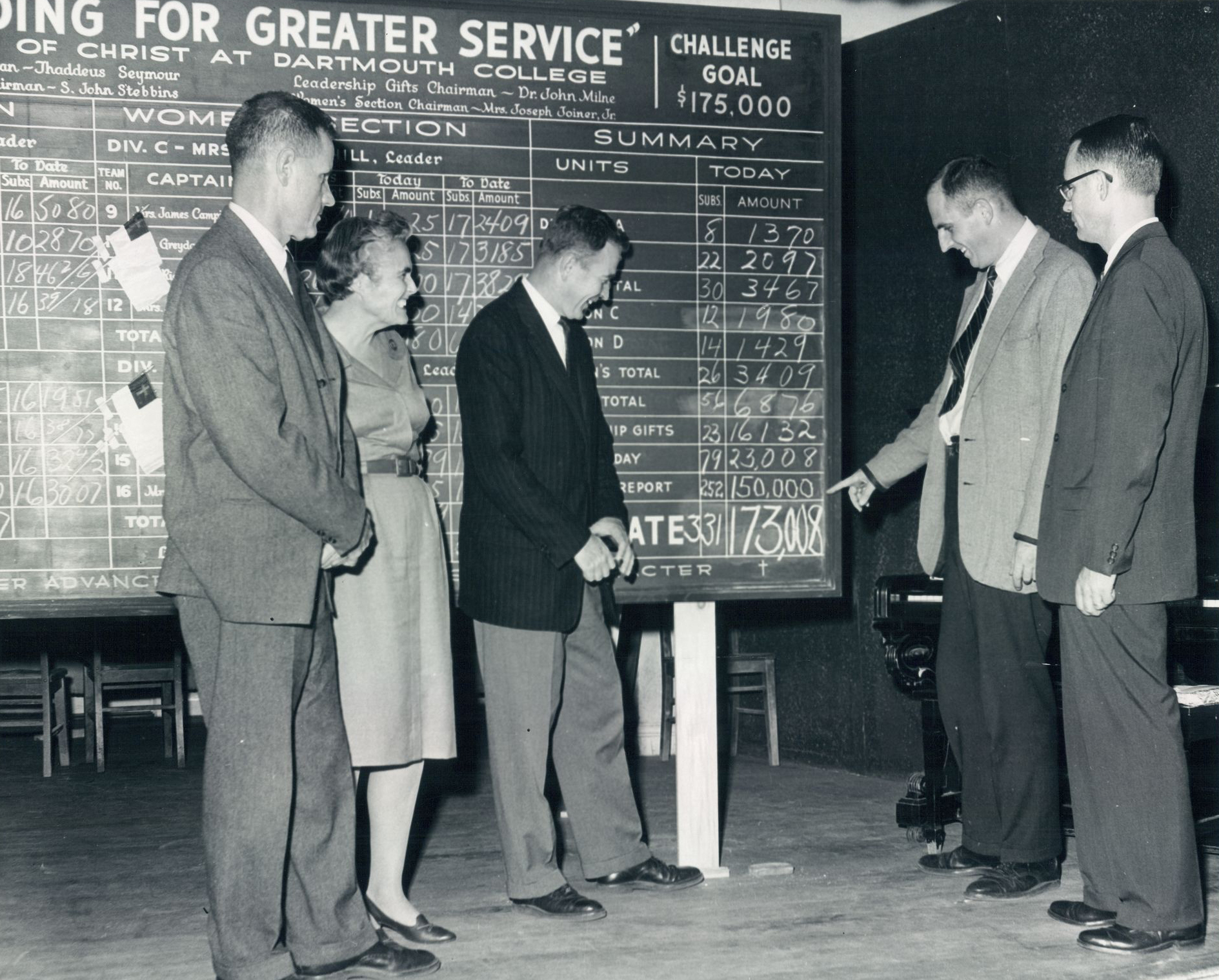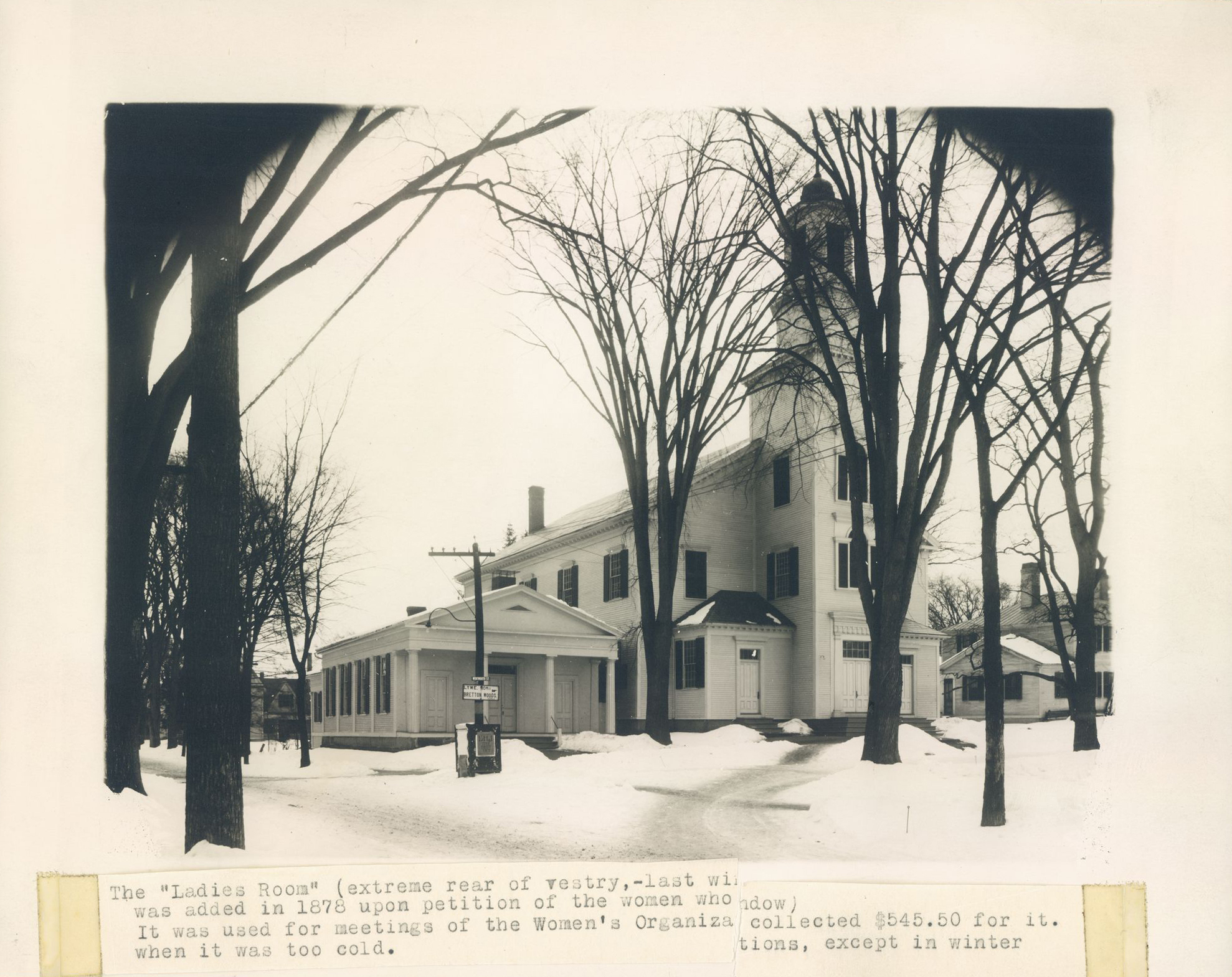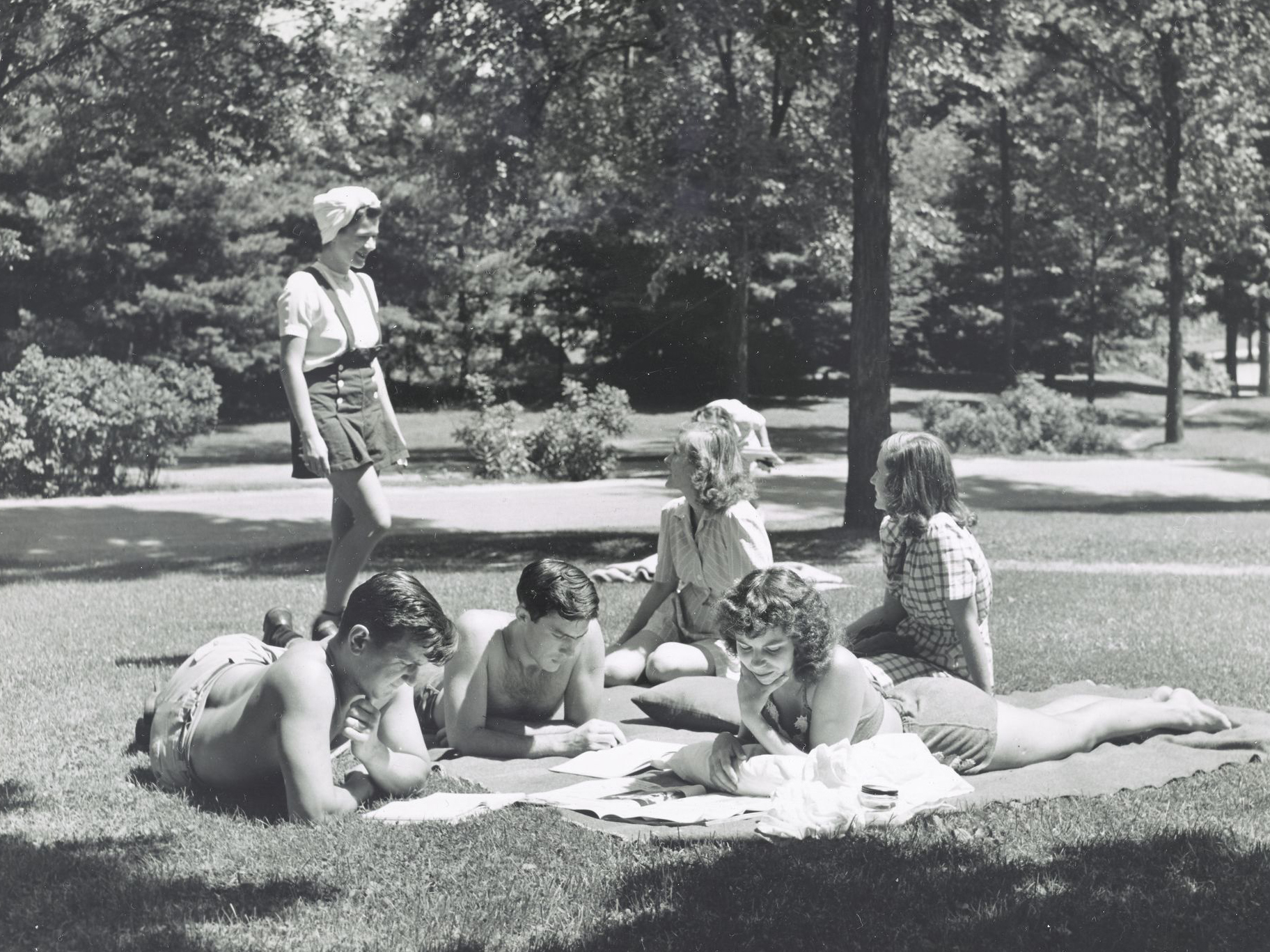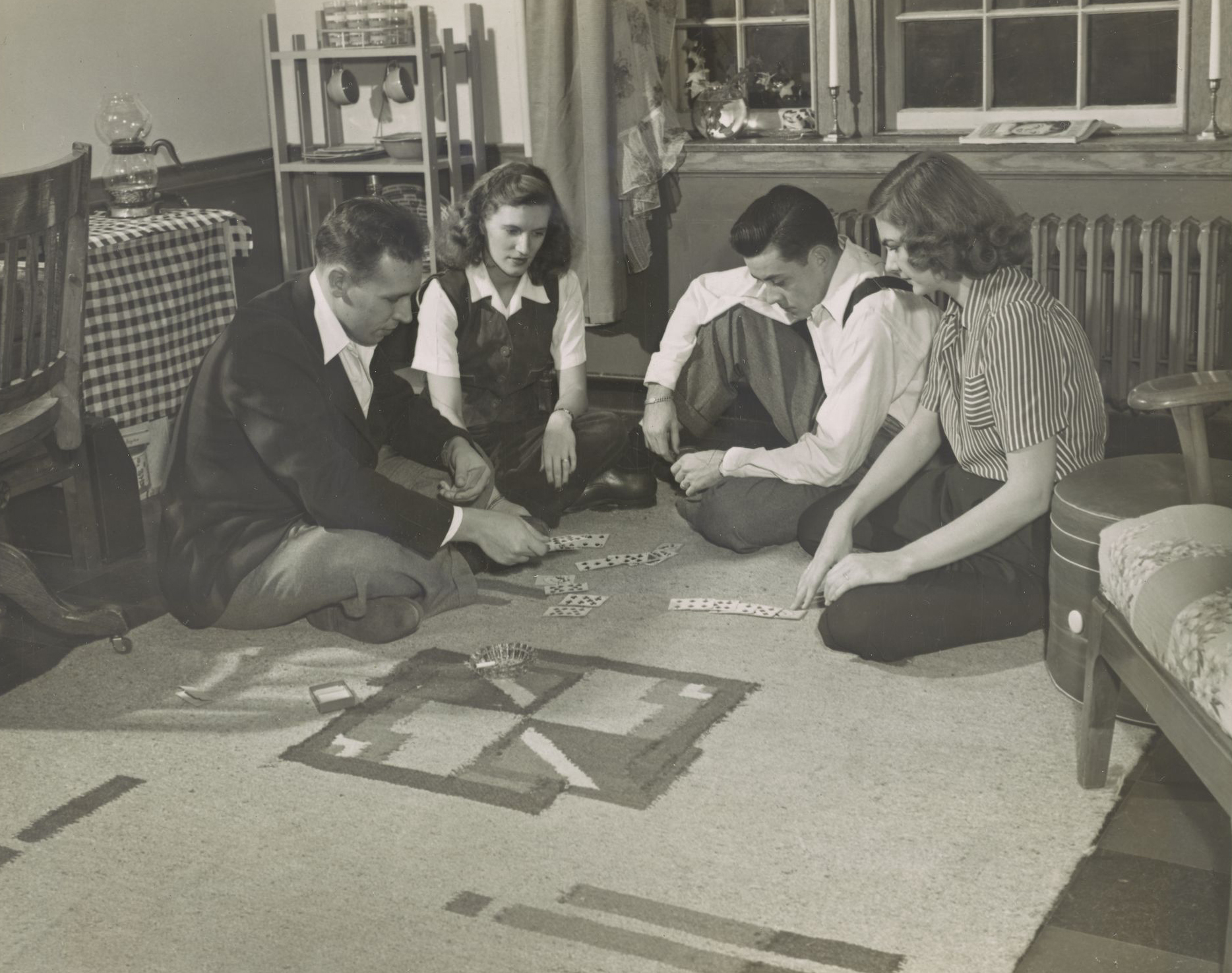An exhibit on female community and women's organizations on campus prior to co-education in 1972. Exhibit curated by Cece King '23 as her final fellowship project.
Fundraising for Female Communities
An exhibit on female community and organized women's groups on campus prior to co-education, curated by Cece King '23 as her fellowship research project.
Curator’s Statement
While Dartmouth only began admitting women as undergraduate students in 1972, “Dartmouth women” existed long before then. After I decided to focus my research on these often-forgotten women at Dartmouth, I discovered that there are gaping holes in the archives where women’s voices should be before 1972. I read letters where Dartmouth men corresponded with female friends. I dove into the records on the hiring process for the Dick’s House “House Mother” position. I even read about Dartmouth men’s impressions of women, such as in For Men Lonely, a 1947 travel guide to women’s colleges that rated and reviewed the women at the schools as if they were restaurants. I could have completed my project on men’s impressions of women in the abstract or women from other colleges who visited Dartmouth, but I wanted to hear from the earliest “Dartmouth women” what it was like at Dartmouth prior to coeducation. Did they have a community? When did they begin to identify as Dartmouth women?
Eventually, I finally found several sources from organized women’s groups who defined themselves as Dartmouth women long before coeducation. For women to feel truly included and immersed in Dartmouth life, they would have needed community and these early women’s groups provided just that. These early groups were universally ambitious and created close-knit communities—many of which have modern day legacies—which may explain why they did a great job of maintaining internal historical records. It is important to note that these groups were predominantly made up of white, upper-class women and faculty wives, so they only represent a specific, privileged demographic. Most interestingly, they all were formed as fundraising groups, which brought me to my second line of questioning: How did fundraising intersect with community-building, and more broadly, how did different types of financial contributions facilitate or prevent Dartmouth women from forming communities?
To understand how financially contributing to the Dartmouth community through fundraising versus employment affected Dartmouth women’s ability to form a female community, I turned to records from the WWII era. When Dartmouth GIs returned to campus to complete their education, many got married and lived with their wives in the dorms. Many more women were living and working on campus than ever before, but having more women on campus did not necessarily facilitate stronger female communities.
In this digital exhibition, I will first take you through WWII and post-war sources to explore women’s experience on campus—working but not finding female communities. Next, I will turn to these earlier organized women’s groups to explore the history of female communities on campus and how they intersect with fundraising. Finally, I will discuss the modern-day legacies of these groups with the Centennial Circle of Dartmouth Alumnae and the current Dartmouth Women’s Club of Boston. Overall, I hope you will reflect on how Dartmouth women have traditionally formed community and think of how the College might work hard to continue to create space for women.
Cece King '23
 Historical Accountability Student Research Program
Historical Accountability Student Research Program



